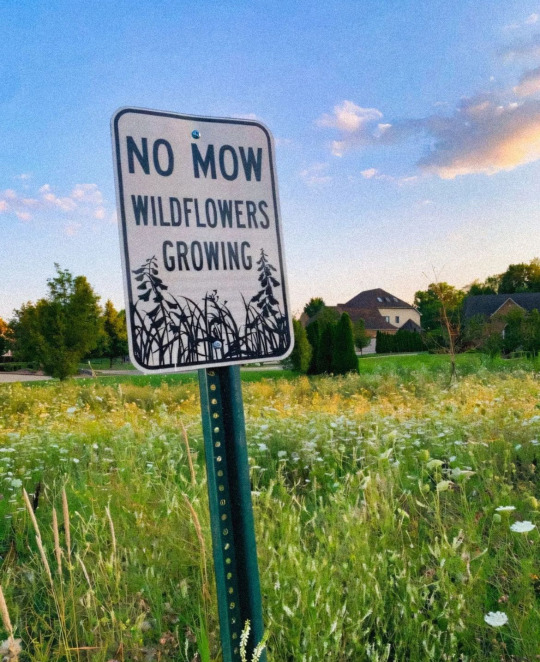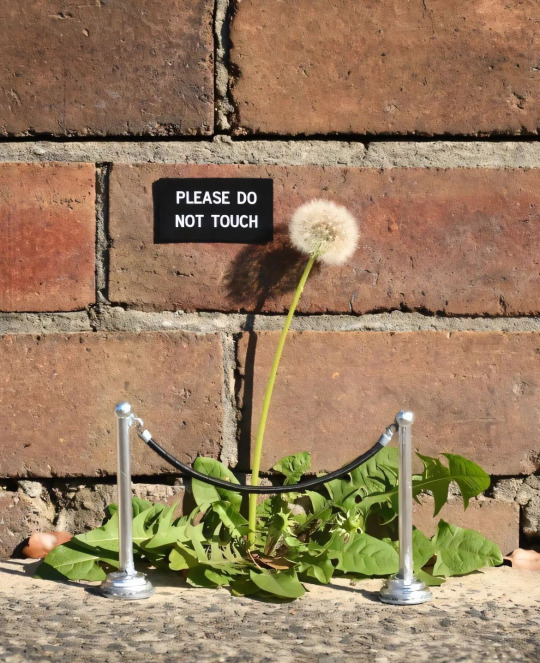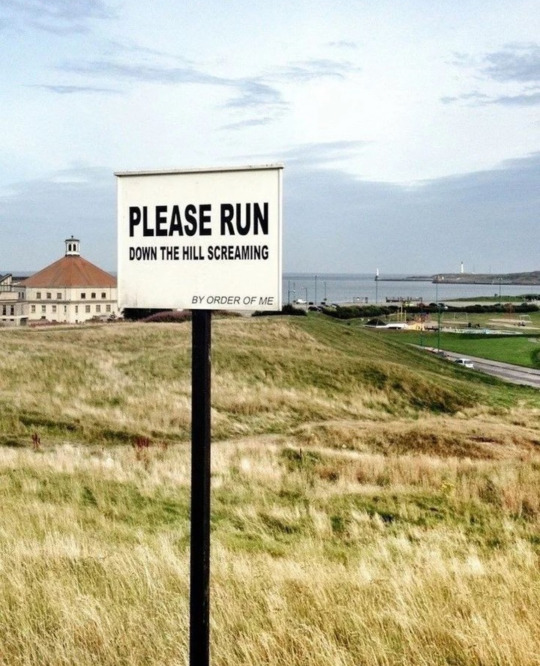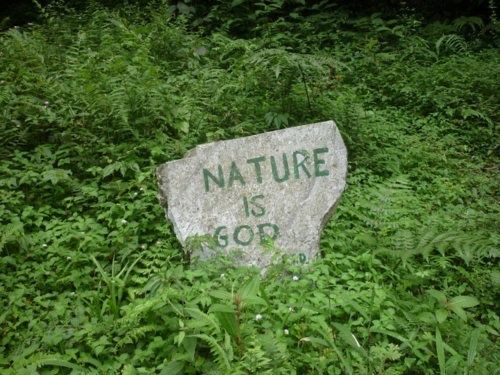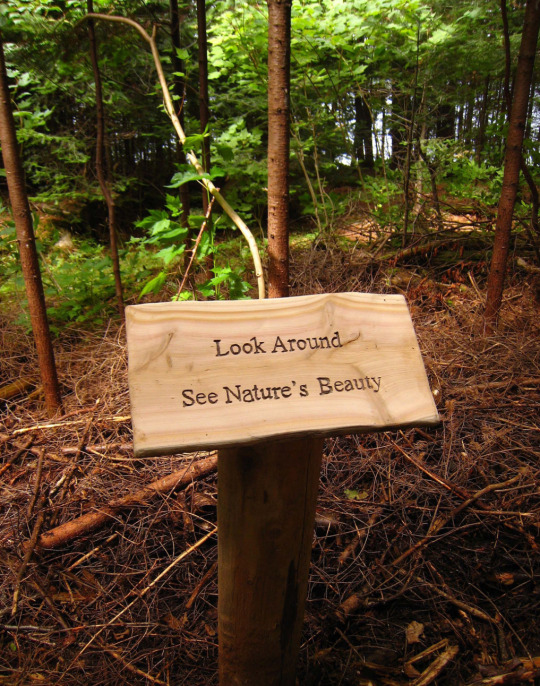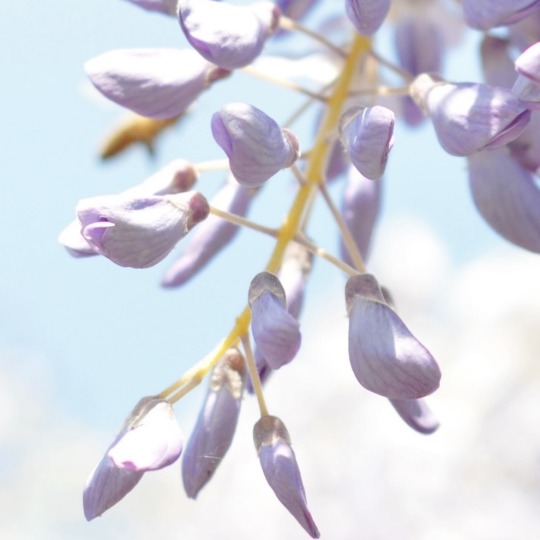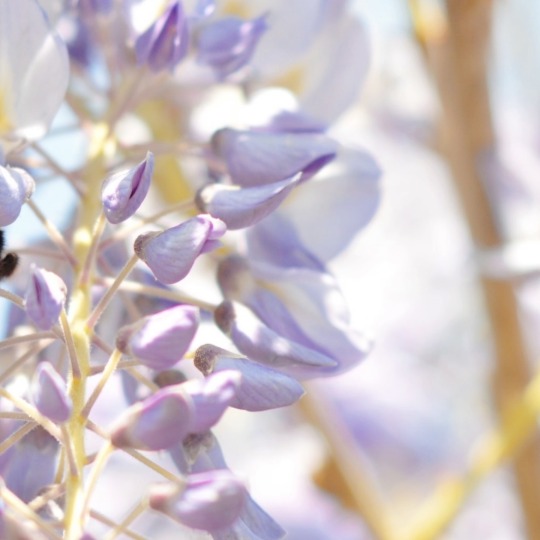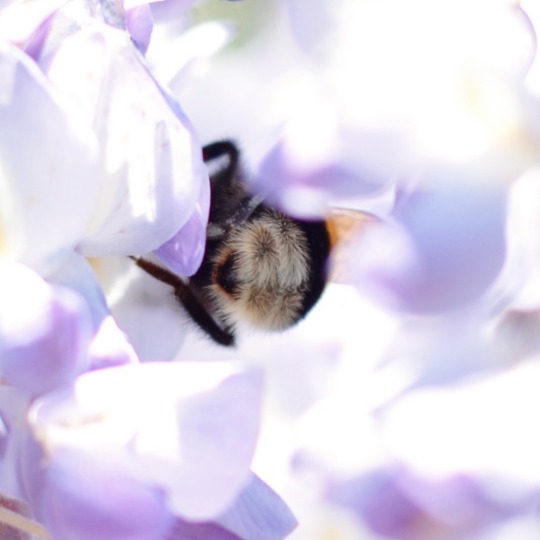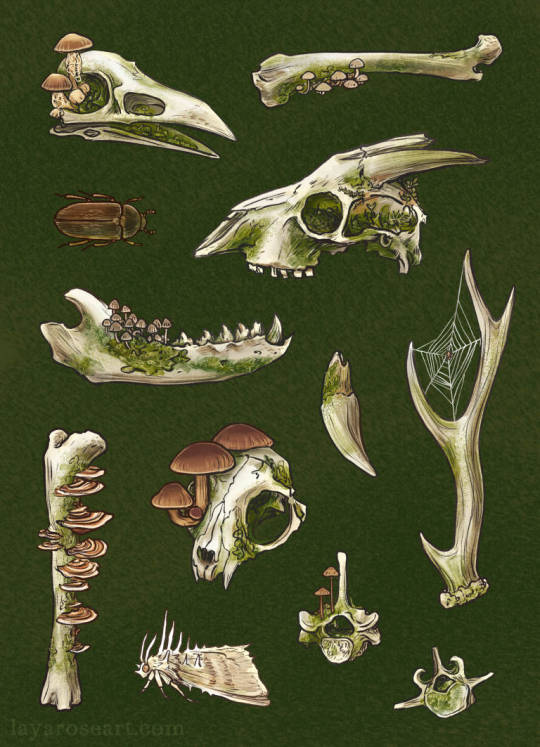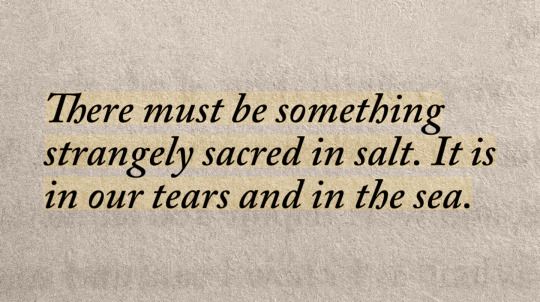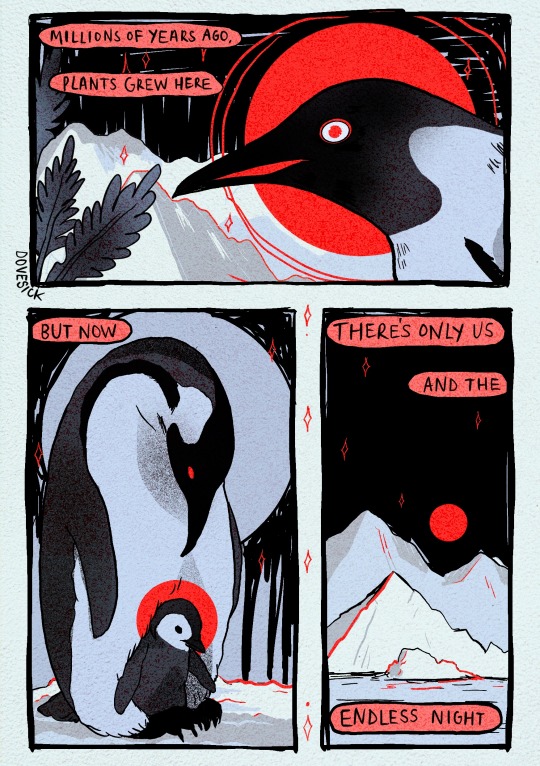he/they/any, kinda animist nature worshipper, nature information, nature appreciation. "I worshipped a storm deity for a year and all I got were these bones that ache when the weather changes."
Don't wanna be here? Send us removal request.
Text
Wait are we called mammals after mammary glands? Are mammals named after tits???
ARE WE THE BOOBS CLASS?
37K notes
·
View notes
Text
Oh my god I'm sooooo mad right now
So. I have no business telling people not to collect wild plants/materials.
I do it all the time.
However.
The words "wildcrafted," and "foraged," even "sustainably harvested," are terrifying to see in an ad on Etsy or Instagram
There is a such thing as the honorable harvest where you ASK the plant if it is okay to take, with the intention of listening if the answer is NO. Robin Wall Kimmerer talked about this, She did not make it up, it is an ancient and basic guideline of treating the plants with respect.
Basically it is not wrong to use plants and other living things, even if this means taking their life. But you are not the main character. You have to reflect on your knowledge of the organism's life cycle and its role in the ecosystem, so you can know you are not damaging the ecosystem. You have to only take what you need and avoid depleting the population.
Mary Siisip Geniusz also talked about it in an enlightening way in her book Plants Have So Much to Give Us, All We Have To Do is Ask. She gave an example of a woman who was on an island and needed to use a medicinal herb to heal her injured leg or she would not survive the winter. In that situation she had to use up all of the plant that was on the island. This was permissible, even though it eliminated the local population, because she had to do it to save her life. But in return the woman had the responsibility to later return to the island and plant seeds of that plant.
And what makes me absolutely furious, is that there are a bunch of people online who have vaguely copied this philosophy of sustainability in a false and insulting way, saying "wildcrafted" or "foraged" materials to be all trendy and cool and in touch with nature, when it is actually just poaching.
If you are from a capitalistic culture the honorable harvest is very hard and unintuitive to learn to practice. I am not very good at it still. This is why it is suspicious if someone is confident that they can ethically and respectfully harvest wild materials with money involved.
So there's this lichen that is often called "reindeer moss." It looks like this:

It grows only a few millimeters a year.
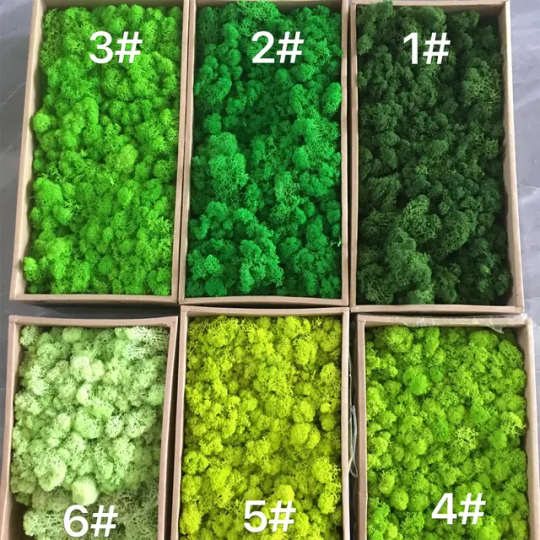
This is "preserved" reindeer moss.
It is from Etsy, similar is also sold in many other online shops, many of which have the audacity to describe it as a "plant" for decorations and terrariums that needs no maintenance.
It is not maintenance-free, it is dead. It has been spray-painted a horrible shade of green. The people buying it clearly don't even know what it is. It is a popular crafting material for "fairy houses," whatever the hell those are. So is moss, also dead, spray-painted, and wild-harvested. Supposedly reindeer moss is harvested sustainably in Finland, where it is abundant, for the craft industry. However poaching of lichens and mosses is absolutely rampant.
It's even more upsetting because there's hardly any articles drawing attention to the problem. This one is from 1999. And the poaching is still going on.
There is a "moss" section on Etsy, and it is so upsetting
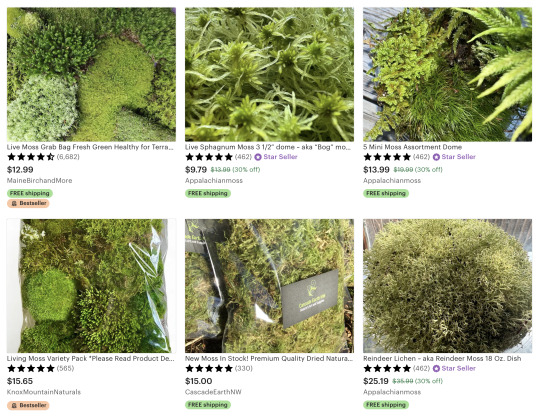
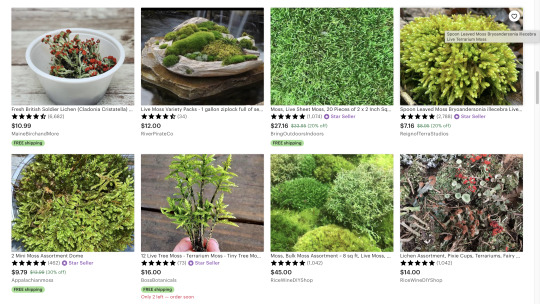
These mosses and lichens were collected from the wild. Most of the shops are in the Pacific Northwest or Appalachia, which are the major locations of moss and lichen poaching. There are some shops based in Appalachia selling "foraged" reindeer moss.
Reindeer moss may be abundant in Finland, but in Appalachia it should NOT be harvested to be sold on Etsy as craft supplies! Moss doesn't grow quickly. Big, healthy colonies like this took years to grow. Some of these shops have thousands of sales, all of bags and bags of moss and lichen, and thinking of how much moss and lichen that must be, I am filled with horror.
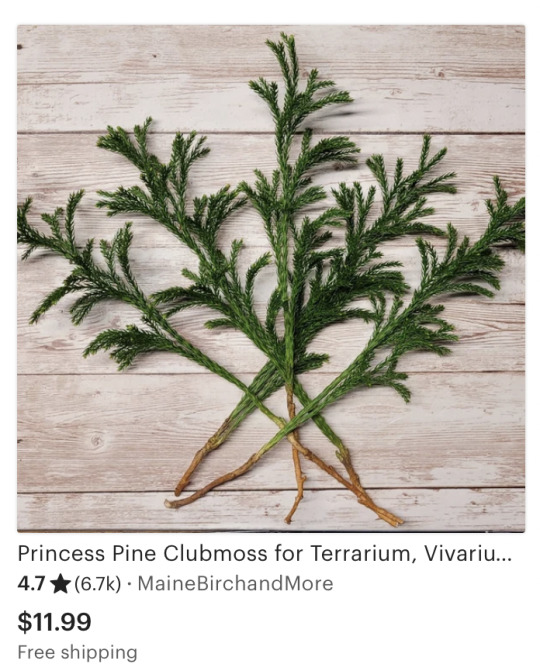
Clubmosses do not transplant well, and these ones have no roots. The buyers do not realize they have bought a dead plant because clubmoss stays green and pliable after it is dead.
This is especially awful because in Mary Siisip Geniusz's book she talked about clubmosses being poached so much for Christmas wreaths that they had almost disappeared from a lot of forests.
I don't even know if this is illegal if it's not a formally endangered species so I don't know if I can report them I'm just. really sad and angry
17K notes
·
View notes
Text
Not sure if I asked this before, but now I'm curious.
#I've always had a complicated relationship with this#10-15 years ago I would have said yes easily#But that part of me had to shut down to survive#Part of me was spending so much time feeling and communing that I wasn't living my life#And now sometimes I wonder how much is actually sending a spirit and me just anthropomorphising my feelings onto something else#A tick and I have no common ground#If I were to understand a tick's soul#I would lose my mind as I have no frame of reference for it's existence#My life is spent in perception of specific experiences#It's life is spent in perception of heat and specific gasses and magnetic fields#How can I perceive it's spirit and soul when I can't even perceive it's world#How disrespectful is it for me to think I could#How disrespectful is it for me to try and pull it's soul into my world and my realm of perception#So idk#But I do believe that the stories we tell ourselves to make our lives livable are real enough#I do get visited by ghosts#And have a resident set of them of them that live at my house#And commune with the souls of my ancestors on occasion#But once again#Is it real?#Does it need to be?
173 notes
·
View notes
Text
It's important to not force your human morals onto non-human nature, like "this creature, since it disgusts me, is bad" or "this creature, since it has behaviors I interpret as sweet and heartwarming, is good"
But if you study nature whether in life or in profession, nature will make you feel disgusted and uncomfortable, it's not necessary to act as if those feelings don't exist within you, because they are part of your encounter with the otherness of nature, and contain sensitivities that can be sharpened into their own ingredient to knowledge and awareness
Coexisting with discomforting parts of the reality of Nature without trying to resolve them into a moral or aesthetic framework you are happy with, reflects maturity
It is no good to "redeem" a hated animal if the redemption is another false idea of the animal as innocent and good. This implies that a creature's "goodness" is a valid reason it deserves existence. It is also no good to treat a beloved animal with hatred to make things fair.
A good example is with dolphins and sharks, dolphins were seen as good and cute and almost human, whereas sharks were seen as bloodthirsty killers, and this has cost the lives of sharks while dolphins are given more sympathy, so some people have tried to turn it around, portraying sharks as gentle and good while pointing out that dolphins can be violent and rape other dolphins.
A lot of dolphin behaviors are certainly upsetting, definitely it makes sense to be upset that an animal can engage in what appears like cruelty, but human morality isn't made to apply to non- humans, and a particular behavior is not the entire reality of what a whole species is like. Dolphins also engage in behaviors that humans judge as friendly, compassionate, altruistic, curious and playful
Think of a particular dog or cat and the variety of complex behaviors they are capable of—an entire species, made of individuals with their own complexity, must be far more complex. All of your emotional responses to dolphins are recognizing the immense complexity of these animals and how they are both like and unlike you, which is important to think about to expand your understanding of the universe
Fitting a creature to a flat framework for your own comfort or internal resolution is a disrespect to the creature. Certainly with sharks, everyone should know the facts about them rather than sensationalistic misinformation—shark attacks are rare, humans are not a preferred food for sharks, and most shark bites are exploratory investigations of a strange object or animal rather than feeding upon a selected prey item, however this doesn't mean sharks are "good" by human standards and it certainly doesn't mean sharks are "safe."
Seeing a video of an enormous Great White swimming placidly I feel that her presence is not just breathtakingly beautiful, but awesome—in the more archaic sense of something that inspires awe, something so great and powerful it could destroy your fragile human life without malicious intent. Likewise with any shark, it is respectful to recognize that they can be dangerous, it is disrespectful to think of them as ocean puppies and try to touch them and grab them.
Fear, disgust, anger—each is an instinct that functions to protect you and is reactive towards potential or perceived threats. Your brain allows you to evaluate things that cause these responses and choose how to act.
All parts of this whole are important because the natural world contains actual threats but knowledge and intentional behavior are important to protecting yourself.
For example, once when I found a tick crawling on my clothing, I felt disgusted and startled, which is appropriate, but my instinctive reaction was to immediately flick the tick off, flinging it onto the floor or furniture nearby where I no longer knew where it was. In this way my response didn't actually protect me but instead increased the level of risk
There are plenty of other examples—if someone sees a venomous snake they might think it is important to kill it, but trying to kill the snake is much more dangerous than leaving it alone, since the snake will try to defend itself. Spraying pesticides to kill bugs can unbalance the ecosystem causing more harmful pests than you started with because the natural predators are also killed. Using poisons to kill mice and rats will also poison their natural predators. Killing coyotes just causes them to disperse and reproduce at a higher rate, and killing wolves causes overpopulation of prey, which causes disease to proliferate and forests to be stripped bare of saplings that could grow up and regenerate the forest...
...And it also works the opposite way with human responses of affection, love and sociability: humans often may feel that they want to make an animal their friend, but often it would be cruel to take that animal into a human house and treat it as a pet. White-tailed deer may seem cute and sympathetic but hunting some of them is important for the health of the ecosystem, and trying to make them tame puts the deer and the humans in danger. Domestic cats are our friends but they are also invasive species in much of the world, destroying populations of birds, mammals and amphibians.
Domestic cats aren't serial killers or murderers either, they are just predatory animals that instinctively hunt and kill prey.
It is hard for facts about animals to be propagated while those facts must be presented as reasons the animal deserves to live or deserves to die. Virginia opossums are important to their ecosystem and deserve to exist. They also don't actually eat ticks, that came from a very flawed and sloppy scientific study that was contradicted by later studies, and sadly the reason this misinformation got so far is that it was "proof" that opossums are valuable and shouldn't be killed for no reason.
Wolves are keystone species and vital to their ecosystems, but it's not true that they never attack humans, there have been a small handful of wolf attacks on humans, it's very few and wolves generally avoid humans but they're not "safe." They shouldn't have to be "safe" to deserve to live.
Fact is, most animals can harm a human if they feel threatened or end up in an unlucky situation! Most animals can spread disease one way or another! We have to live with this, we have to learn and use strategies to keep ourselves safe, we can't just sterilize the world of animals because of a possibility that an animal could hurt someone, any more than we can cut down every tree because trees fall on people sometimes.
No one likes hearing that there's no way to for-sure eliminate all possibility of ticks from your yard, you just have to take precautions against them, but it's true! Just like there's an inherent possibility a wasp could sting you, an inherent possibility a snake could bite you, an inherent possibility a mountain lion could eat your livestock, but you can dramatically lower your risk of these things by knowing how to coexist with these animals.
3K notes
·
View notes
Photo
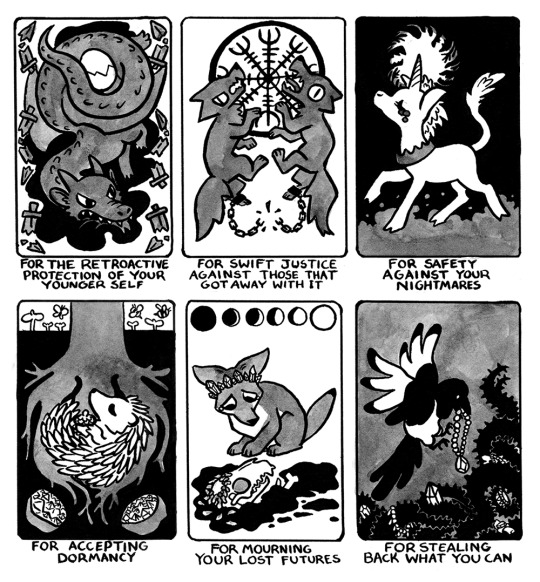
Magical Art Therapy ● Sigils for Trauma and Recovery
(series) (prints)
38K notes
·
View notes
Text
The frogs have their own gods too they say. Who look like frogs. And have aspects and values that the frogs care for, there are gods of flies, and gods of ponds, and gods of eggs.
And the cats have their gods too, gods of stalking, and gods of sleep, and gods of yarn and string. And even the smallest bugs have their own gods, gods of death that look like hands and feet, and gods of comfort that look the crumbs and dew drops.
When the beasts of the earth pray we do not see it, and do not know it, for their gods are not our own. And we so rarely notice them, because we so rarely notice that which is not relevant to humans goals.
Though if you find yourself at the mercy of a god for beasts, be warned for they will not be appeased by human means. And the god of wolves would destroy a human to save a wolf as quickly and calmly as one of our gods would kill a human to spare their follower.
183 notes
·
View notes
Text
thank u earth for leather & fur & sex & pottery & laughter & rain & the lilac bush & hay in a field & cows to eat the hay & thank u earth for a perfect view of the moon
33K notes
·
View notes
Text
What I was taught growing up: Wild edible plants and animals were just so naturally abundant that the indigenous people of my area, namely western Washington state, didn't have to develop agriculture and could just easily forage/hunt for all their needs.
The first pebble in what would become a landslide: Native peoples practiced intentional fire, which kept the trees from growing over the camas praire.
The next: PNW native peoples intentionally planted and cultivated forest gardens, and we can still see the increase in biodiversity where these gardens were today.
The next: We have an oak prairie savanna ecosystem that was intentionally maintained via intentional fire (which they were banned from doing for like, 100 years and we're just now starting to do again), and this ecosystem is disappearing as Douglas firs spread, invasive species take over, and land is turned into European-style agricultural systems.
The Land Slide: Actually, the native peoples had a complex agricultural and food processing system that allowed them to meet all their needs throughout the year, including storing food for the long, wet, dark winter. They collected a wide variety of plant foods (along with the salmon, deer, and other animals they hunted), from seaweeds to roots to berries, and they also managed these food systems via not only burning, but pruning, weeding, planting, digging/tilling, selectively harvesting root crops so that smaller ones were left behind to grow and the biggest were left to reseed, and careful harvesting at particular times for each species that both ensured their perennial (!) crops would continue thriving and that harvest occurred at the best time for the best quality food. American settlers were willfully ignorant of the complex agricultural system, because being thus allowed them to claim the land wasn't being used. Native peoples were actively managing the ecosystem to produce their food, in a sustainable manner that increased biodiversity, thus benefiting not only themselves but other species as well.
So that's cool. If you want to read more, I suggest "Ancient Pathways, Ancestral Knowledge: Ethnobotany and Ecological Wisdom of Indigenous Peoples of Northwestern North America" by Nancy J. Turner
67K notes
·
View notes
Text
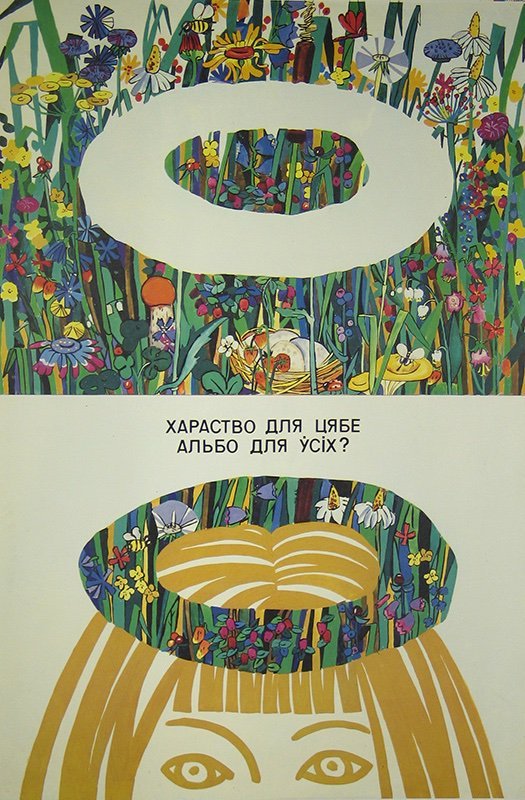
"Is the beauty for you or for everyone?" Environmental poster from the Belarusian SSR, 1986
8K notes
·
View notes
Photo

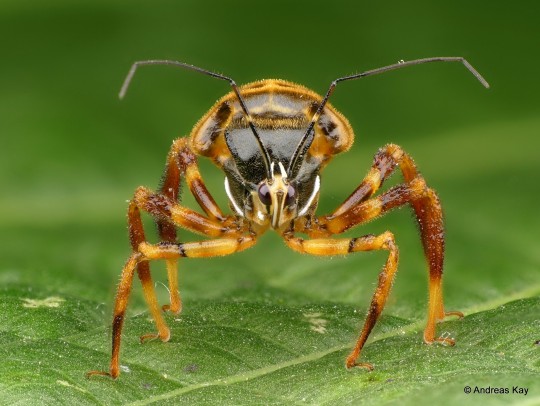

Bee mimic assassin bug, Notocyrtus sp., Reduviidae
Photographed in Ecuador by Andreas Kay
1K notes
·
View notes

